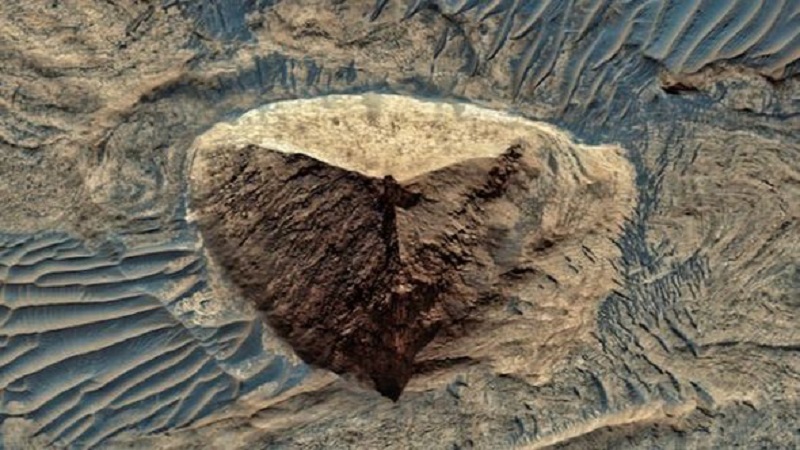Hidden Underground City Beneath the Pyramids? Giza’s 2025 Discovery Sparks Global Uproar

A game-changing 2025 radar scan beneath Egypt’s Giza Plateau has unveiled seismic anomalies that could point to a vast, ancient underground network—potentially a city. If verified, this would crush the 4,500-year timeline taught in every classroom and place advanced human engineering as far back as 38,000 years ago. You read that right.
Massive Structures Detected Beneath the Khafre Pyramid
According to seismic and radar imaging released by teams from the University of Pisa and University of Strathclyde, researchers have located:
-
Subterranean shafts descending over 2,100 feet
-
Grid-like chambers stretching even deeper—possibly 4,000 feet below ground
-
Non-random geometry, suggestive of intelligent design, not natural formation
This discovery leans heavily on digital tomography and long-range ground-penetrating radar—equipment not previously used at this depth in Giza.
“These aren’t caves. These are engineered tunnels,” says Dr. Corrado Malanga, physics professor at Pisa.
Is This the Legendary City of Amenti?
The research team believes the formations may be linked to Amenti, a lost city referenced in the Egyptian Book of the Dead. The structures’ depth and layout mirror descriptions of underground sanctuaries built to house ancient knowledge.
They tie its age to the Younger Dryas impact event—a proposed cataclysm around 12,800 years ago that could have triggered massive floods and buried entire civilizations. If accurate, this would predate Göbekli Tepe (11,500 years old) by more than 26,000 years.
Water Damage Raises Eyebrows
Researchers identified:
-
Salt crusts up to 0.5 inches thick inside the King’s Chamber
-
Signs of aquatic erosion on outer limestone blocks
-
Historical documentation by 19th-century explorers (Petrie, Vyse) confirming similar anomalies
This points to long-term submersion—impossible under current climate assumptions for the Sahara region.
Scientific Backlash (As Expected)
Leading Egyptologist Dr. Zahi Hawass rejected the findings outright:
“These scans are speculative. We’ve seen this movie before.”
Radar imaging expert Prof. Lawrence Conyers (University of Denver) dismissed the depth claims, arguing that humans 38,000 years ago were “hunter-gatherers, not architects.”
So, What’s Actually There?
Confirmed radar anomalies under the pyramid
No peer-reviewed validation yet
Experimental radar tech used—still outside archaeological norms
It’s not that the tech is flawed—it’s that it’s new. And science hates new things until it’s cornered by evidence.
Why This Could Flip Everything
If even a sliver of this holds up under future excavation:
-
Egypt may be forced to greenlight deeper digs under international pressure
-
Egyptology will no longer be able to sideline oral traditions or ancient texts as pure myth
-
History books—from timelines to origin stories—will need revision
The implications reach into climate science, engineering history, and how we define “civilization.”
Real Questions People Are Asking
Is there actually a lost city under the Giza Pyramids?
Right now, there’s no exposed structure—just radar imaging showing unnatural voids and shapes far beneath the surface. No digging yet.
Why hasn’t this been peer-reviewed?
Politics, bureaucracy, and scientific caution. No surprise. Peer review takes time, and this could upend too many careers if proven true.
Could this be linked to Atlantis?
Maybe thematically. The “Amenti” name and flood evidence align with flood myths—but there’s no direct correlation beyond symbolic overlap.
Will the Egyptian government allow deeper excavations?
Unlikely without global media and academic pressure. It’s a sensitive issue politically and nationally.
Could this be the greatest archaeological discovery of the century?
If verified? Absolutely. If not? It still advances radar tech and forces academia to ask better questions.
It’s Either Real or It’s History’s Boldest Bluff
Either we’ve just glimpsed the oldest city ever built—or we’re watching another fringe theory sell headlines. But something’s down there. And unlike past hoaxes, this time the tools are better, the anomalies are deeper, and the world is watching.
If Giza is hiding more than tombs and stones, it’s time to dig—with science, not just speculation.
0 comments